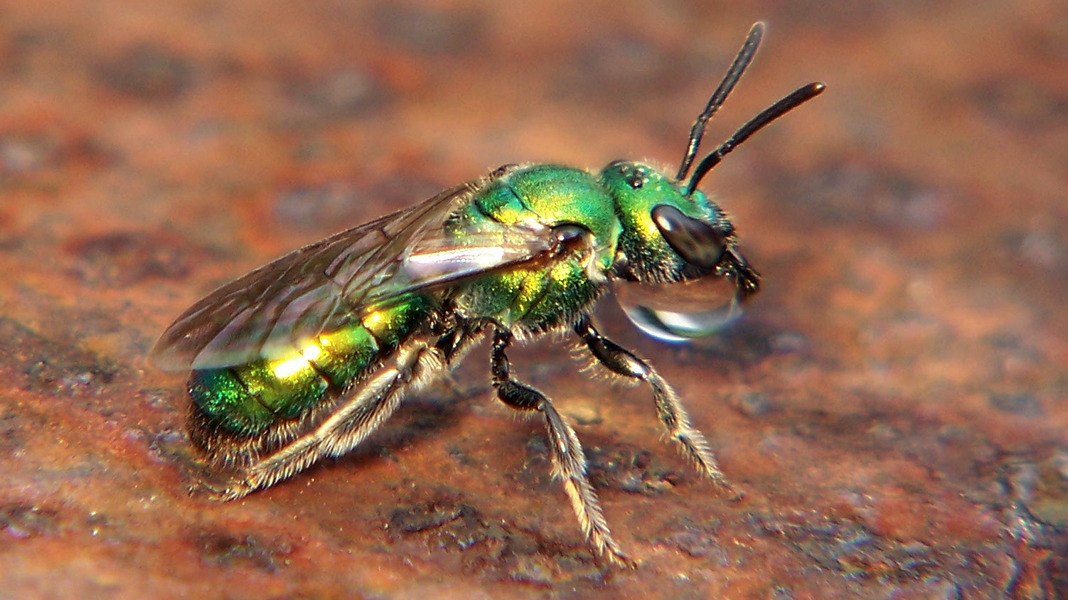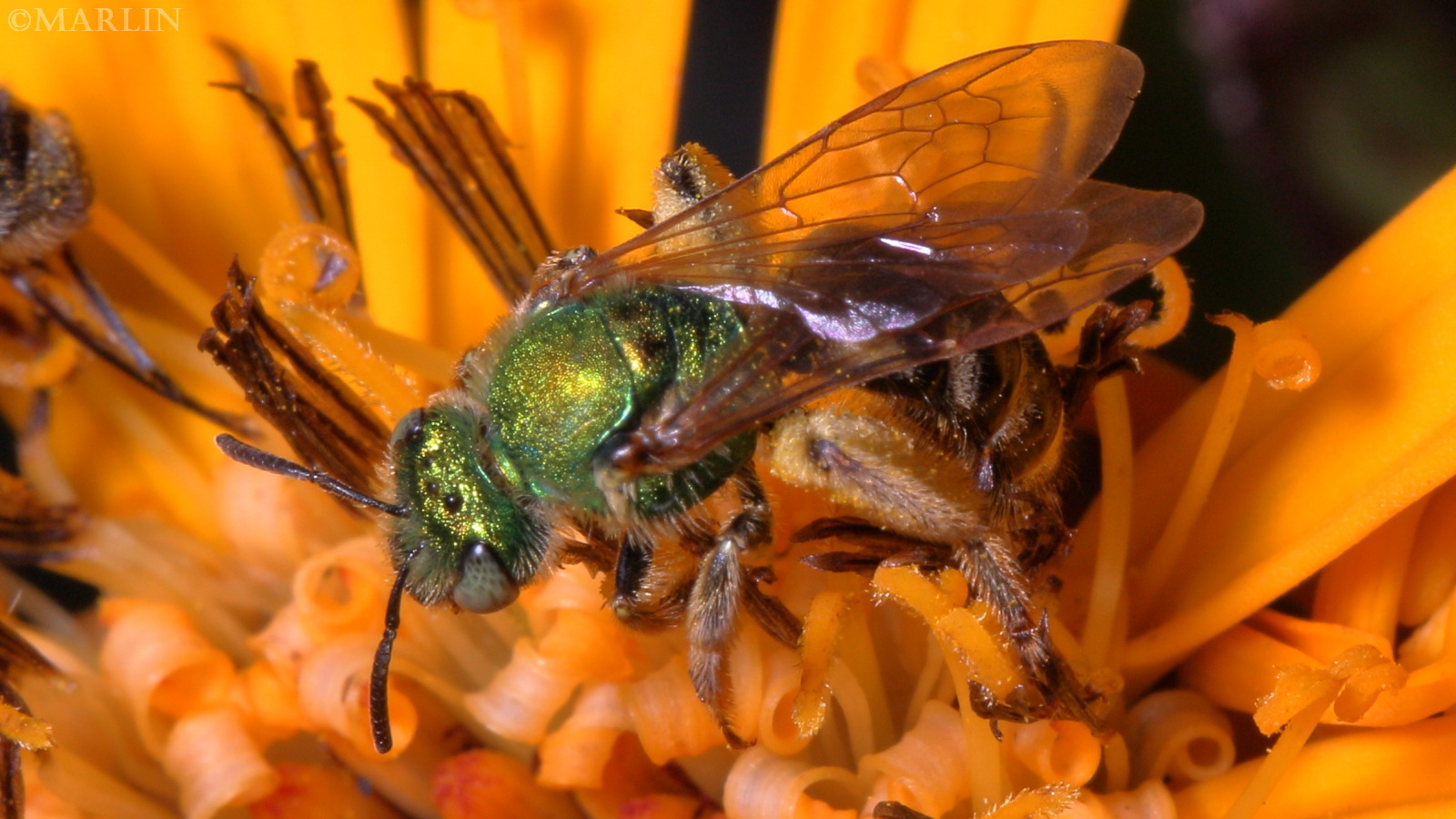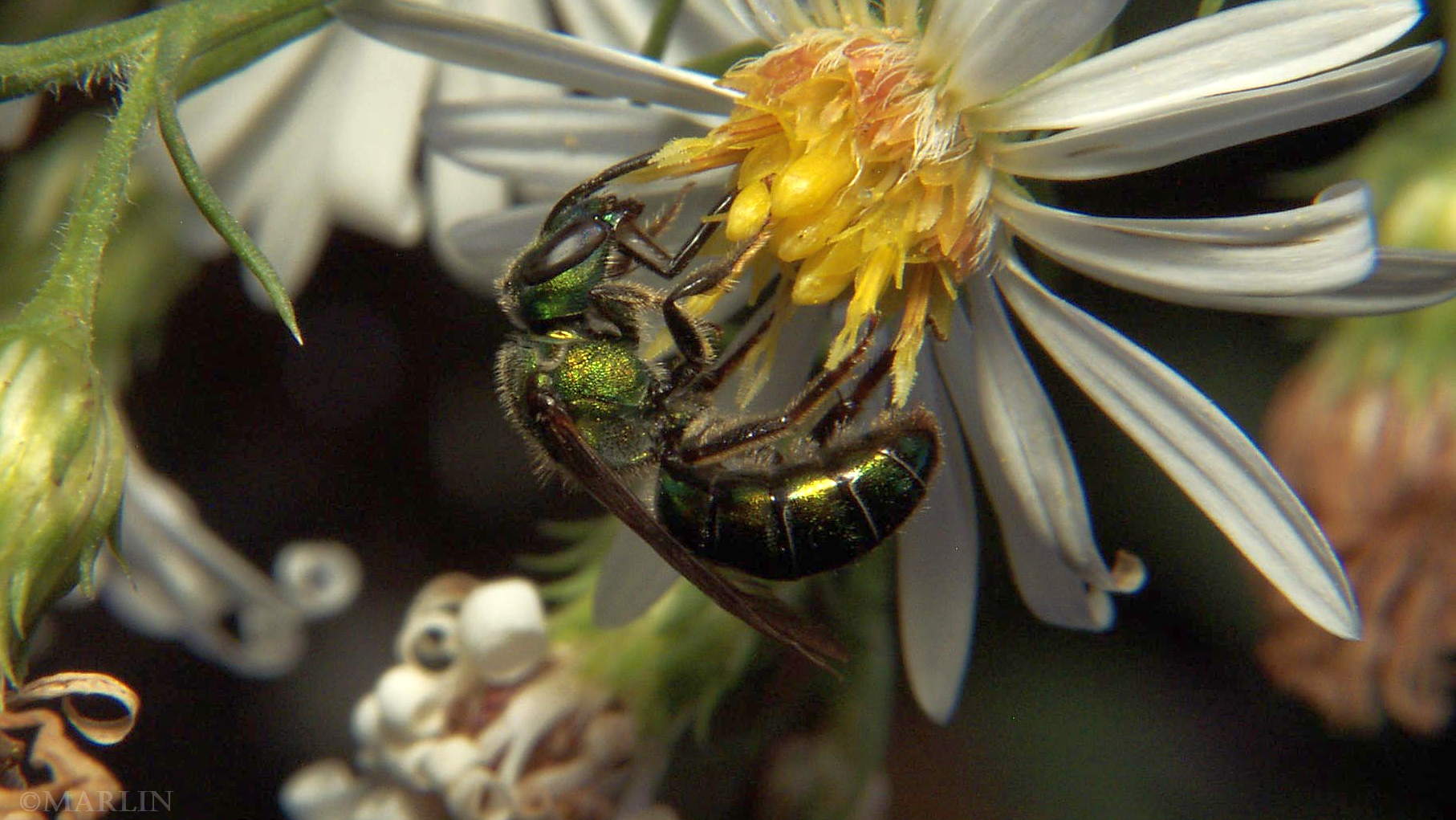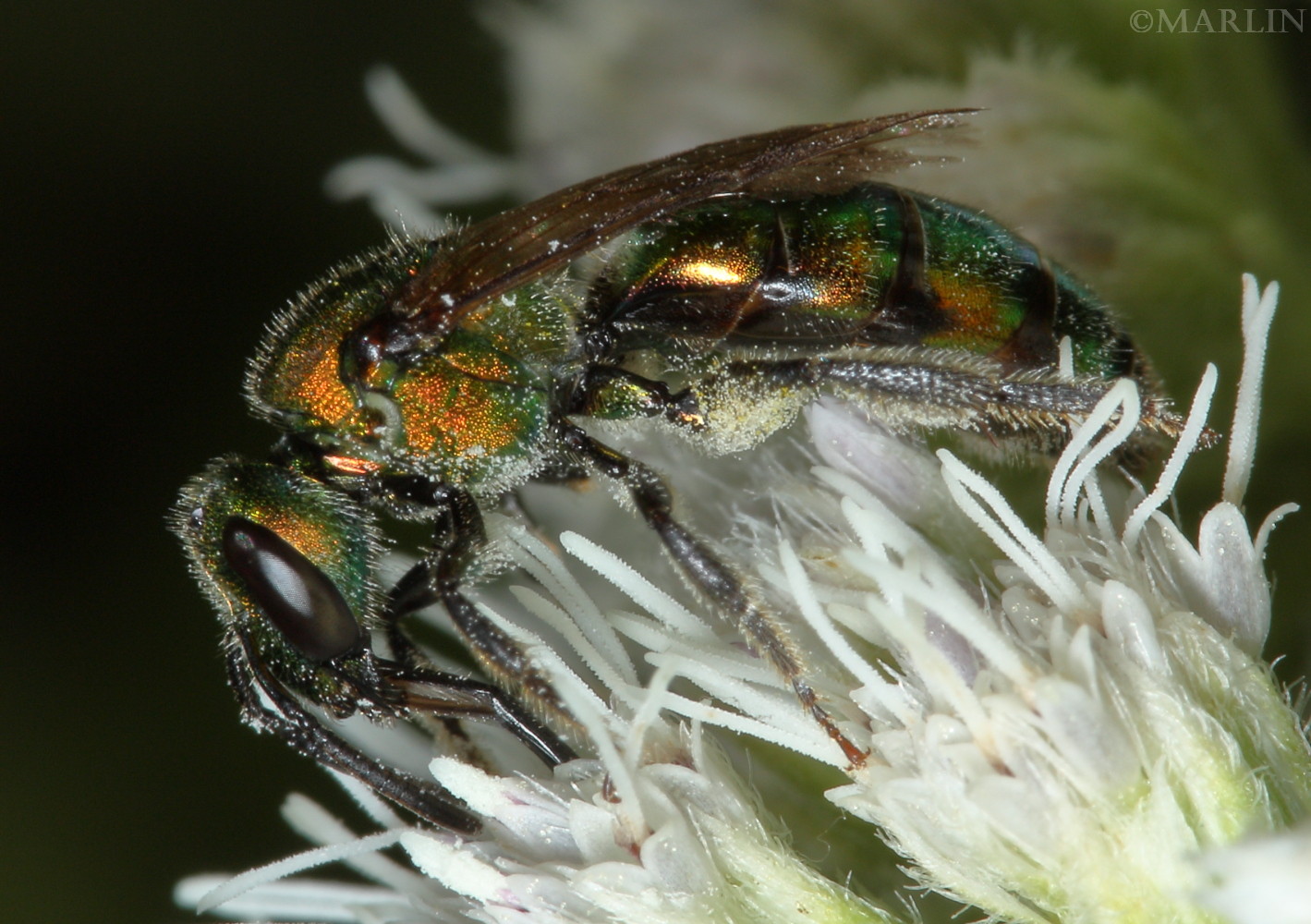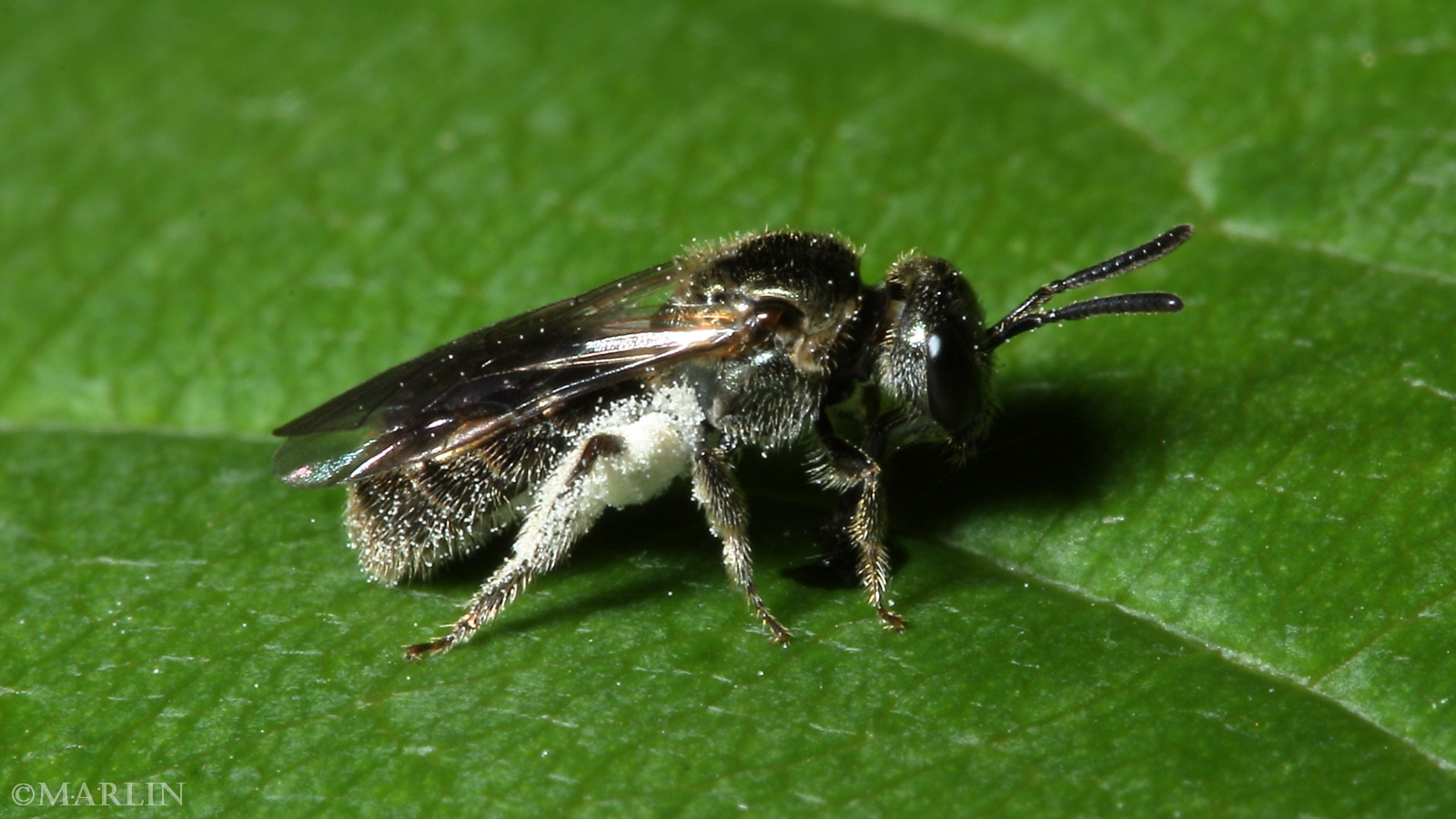Halictid Bees – Family Halictidae
 Order Hymenoptera / Suborder Apocrita / Infraorder Aculeata / Family Halictidae
Order Hymenoptera / Suborder Apocrita / Infraorder Aculeata / Family Halictidae
Live adult Halictid bees photographed in the wild at various North American locations.
There are some 500 species of Halictidae in North America [1]. Many are easily recognizable due to their beautiful, iridescent green or golden colors, making them favorites of many insect photography hobbyists. Most are pollen feeders and important pollinators, especially in light of the worldwide decline of the domestic honeybee. However, continuing destruction of their habitat due to human encroachment and modern agriculture’s unfortunate love affair with vast monocultures of self-pollinating crops such as corn, soybeans, wheat, rice are exacerbating the general decline in viable populations of wild hymenoptera [2].
Agapostemon splendens on Ligularia flower
Fruit and seed crops that depend on insect pollinators (apples, almonds, broccoli, chili peppers, cantaloupe, carrots, strawberries, grapes, among many others) produce relatively little food per acre compared to the crops that provide our staple carbohydrates. The expansion of farmland to produce these crops is a double-edged sword; it destroys wild bees’ nesting sites, and it destroys the wildflower stock the bees depend on when the fruit trees are not in flower [2].
Researchers in Britain and the Netherlands have found that the diversity of wild bee species in those countries has declined since 1980 [3].
Between 1940 and 1960, as more and more land came under cultivation in the American Midwest, several species of native bumblebees disappeared from the area. A growing shortage of both domesticated (the number of managed honeybee hives declined by 45% over the past 50 years) and wild pollinators perpetuates a vicious circle: fewer pollinators reduce crop yields, requiring cultivation of even more land to produce the same amount of food [2].
Halictid bees are important pollinators of flowering plants Augochlora pura
Lasioglossum species with a heavy pollen load
There are approximately 280 species in the large genus Lasioglossum. Closely related to Halictus and Agapostemon, these tiny bees are often the most numerous of all bees in a habitat. The genus is so cosmopolitan, it spans the range of social behaviors including solitary, communal, and social habits.
Most Halictids nest in the ground. Some species line their tunnels with a cellophane-like glandular secretion composed of chemicals called lactones. Each individual bee has its own unique chemical signature, helping workers return to the nest [4].
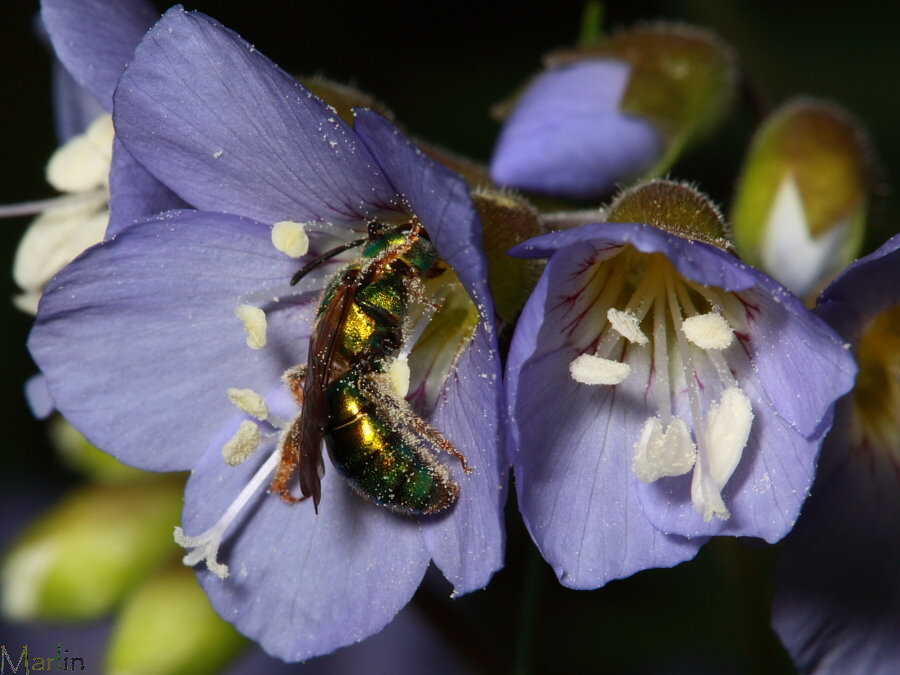
Identifying characteristics for the family Halictidae include:
- As in other families of the superfamily Apoidea, members of the family Halictidae have:
- a collarlike pronotum without projections that reach the tegulae,
- body hairs that are branched or plumose, and
- first segment of the metatarsus often enlarged and flattened.
- 1 subantennal suture (Andrenid bees have 2).
- Front wing with basal vein strongly arched.
- Hind wing with jugal lobe longer than the submedian cell.
- Thorax of some species metallic green like the chrysidid wasps, but halictids lack the sculptured cuticle (1)
References
- John L. Foltz, University of Florida, Dept of Entomology & Nematology, ENY 3005, Hymenoptera: Halictidae.
- Marcelo Aizen and Lawrence Harder, New York Times, “Too-Busy Bees” March 24, 2010
- Science, “Parallel Declines in Pollinators and Insect-Pollinated Plants in Britain and the Netherlands“
- Lisa Schonberg, Mace Vaughan, and Gretchen LeBuhn, The Great Sunflower Project, “Lasioglossum“
Insects & Spiders | Bees & Wasps Index | Bees & Wasps Main | Beetles Index

